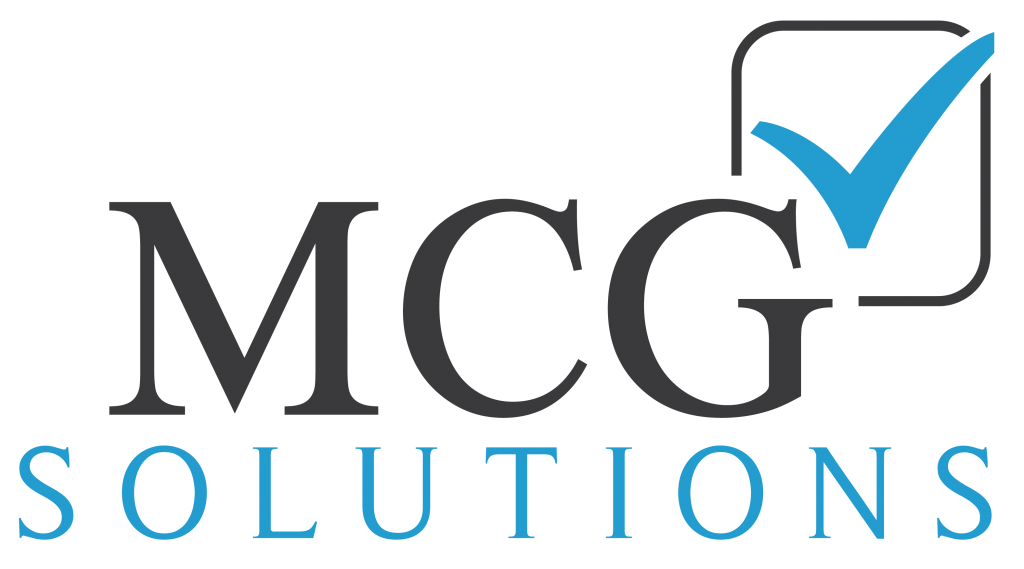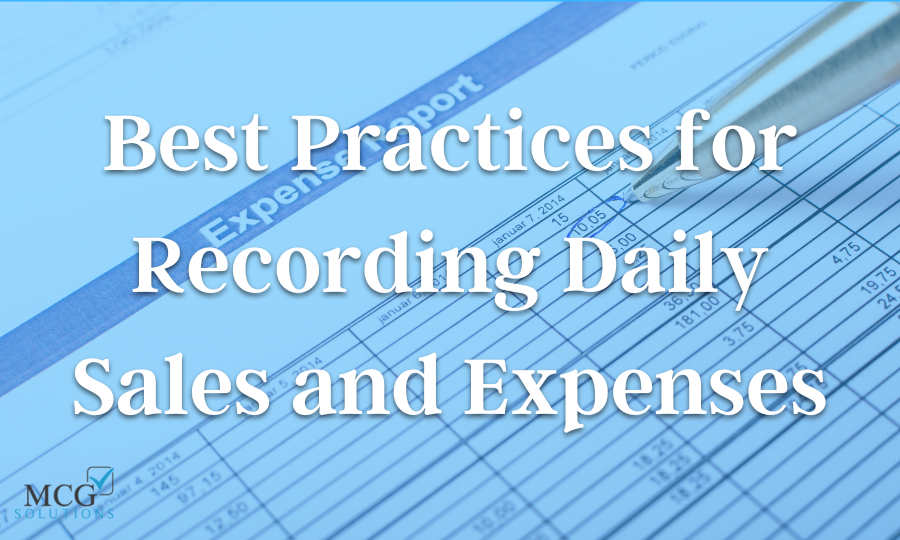Financial management can be a struggle for small businesses. Often, business owners open their own companies based on a different passion, whether that’s handmade couture or wanting to cook for customers. While their product or service skills are top-notch, owners may not necessarily understand how to keep good financial records.
Recording your daily sales and expenses is a key part of keeping thorough records. These tips and tricks will help you make it easier, even if you’re new to business operations.
Determine reporting type
First, decide whether you need to report cash basis or accrual to the IRS. The team at MCG Solutions can help you verify which method is right for you. Generally, however, businesses who do not stock inventory items and have acquired less than $25 million over the last three years should use cash basis reporting. Otherwise, you’ll need to use accrual reporting.
Create your main reporting documents
Next, you’ll need to create a balance sheet, a profit and loss statement and a cash flow statement. The balance sheet helps calculate your company’s assets, liabilities and equity in the company name. Each week or month, update this sheet with new information.
The profit and loss statement (also known as an income statement) will help determine your company’s overall profitability. Profit is calculated by subtracting expenses from revenue for the reporting period. At the end of each period, update the information and review for any unusual changes.
Finally, the cash flow statement tells you where your company’s money is going: how much is coming in, how much is in assets, how much is invested in the business and more. Most businesses create cash flow goals and projections from this information.
Save your documentation
Next, make sure that you record all financial transactions on a weekly basis. Have your bookkeeper balance your books every one to three months. The best way to support this goal is by saving all of your financial documentation each period. Many business owners scan these documents and keep them in a cloud-based folder or bookkeeping database. This can make it easier to send documentation to your bookkeeper.
Generally, you should keep:
- 1099 forms
- Bank statements
- Bills
- Canceled checks
- Client invoices
- Client payments
- Credit card statement
- Deposit slips
- Payroll documentation
- Receipts
- Sales receipts
- Tax returns
Choose the right software
Finally, choose the right software to help you track your expenses. Many owners use QuickBooks, which makes it easy to record expenses and income. However, some owners use simple spreadsheets or other programs to keep track of sales and expenses.
Following these tips will not only help you track your daily sales and expenses, but you’ll be able to use the balance sheet, profit and loss statement and cash flow statements to track transactions over longer periods. This allows business owners to get a better sense of their financial health—and strategize for future growth.
If you need help setting up your financial recording system or other bookkeeping assistance, reach out to the team at MCG Solutions today.

